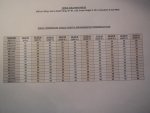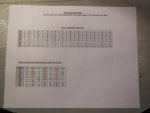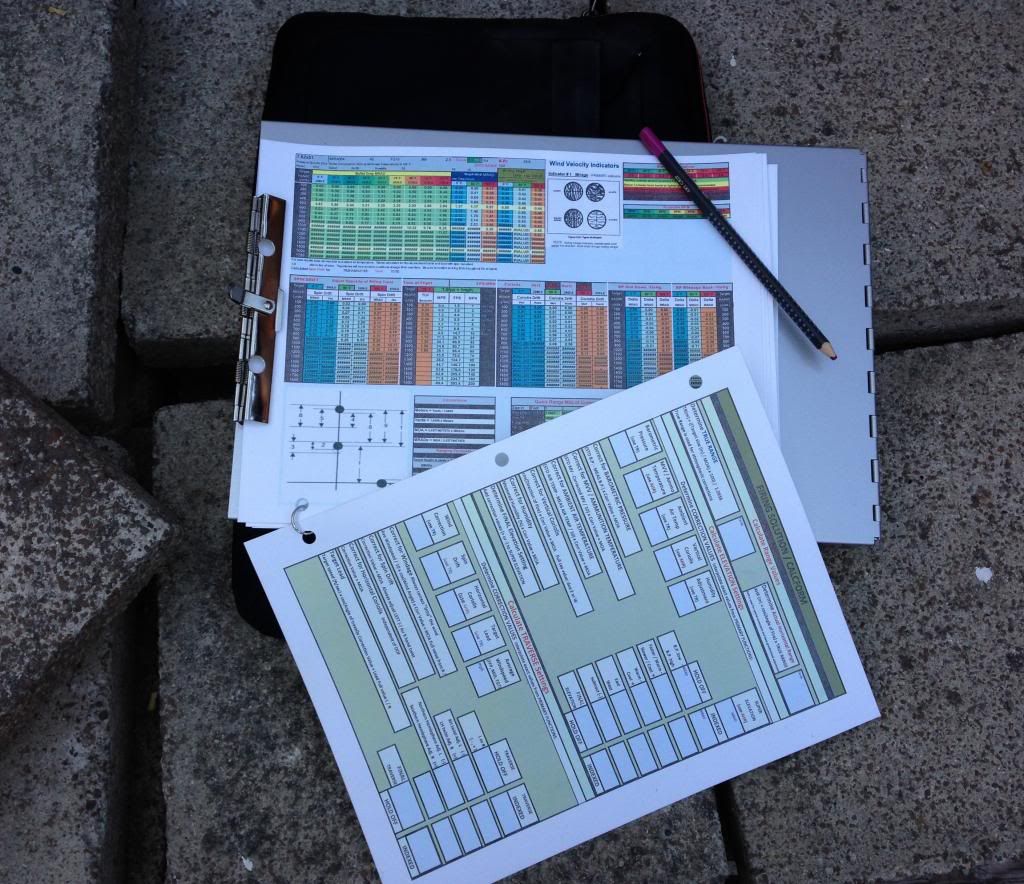Here is something I came up to organize a lot of data in a small space. PDAs are great, but batteries go dead, can break, or simply be forgotten or lost. Analog ballistic computers are also great, but again, can be lost or forgotten. My tables can serve as a backup, or as a no-cost primary method for the financially challenged. All it takes to build these tables is access to the internet and a printer.
I built these tables for the FGM 168 gr .308. The lot that I was using at the time was producing the indicated MVs at the indicated temperatures from my rifle, although I did not get to verify the extreme ends of the scale. Likewise, I have not fired at every indicated pressure, either, so the table is still very much a draft product.
I built the table for my 1-MOA elevation click M3 dials Leupold; it could easily be built for half MOA or mils or whatever.
Locate the temperature in Fahrenheit in the “Temperature” column in Table 1 that is closest to the ambient air temperature at your firing position. Take care to ensure that your ammunition remains as close to the ambient air temperature as possible.
Read right on the temperature row until you reach the Barometric Pressure/Altitude column that is closest to your firing position. Actual station pressure that you measure with a barometer will give the best result. DO NOT USE “corrected pressure.” The indicated altitude above mean sea level should only be used if the station pressure is unavailable. The number located in the cell where your temperature row and barometric pressure column intersect is the Minute of Angle (MOA) elevation solution for 800 meters. Find this number in the 800 meter row of Table 2. This column will be your elevation settings, or “come ups,” for your current position and conditions.
Example: Current temperature is 82 F, barometer reads 29.45. The 800 meter solution is 34 MOA. A target at 500 meters will require an elevation setting of 15 MOA on your sight.
Refer to Table 3 for wind holds for a 10 mile per hour full value wind. Find the range to the target on the left and read right until you intersect the column for your 800 meter elevation solution.
For field use I cut down the tables and laminate them together into a two-sided card that fits in my stock pack.
Let me know if you have ideas to improve this system.
I built these tables for the FGM 168 gr .308. The lot that I was using at the time was producing the indicated MVs at the indicated temperatures from my rifle, although I did not get to verify the extreme ends of the scale. Likewise, I have not fired at every indicated pressure, either, so the table is still very much a draft product.
I built the table for my 1-MOA elevation click M3 dials Leupold; it could easily be built for half MOA or mils or whatever.
Locate the temperature in Fahrenheit in the “Temperature” column in Table 1 that is closest to the ambient air temperature at your firing position. Take care to ensure that your ammunition remains as close to the ambient air temperature as possible.
Read right on the temperature row until you reach the Barometric Pressure/Altitude column that is closest to your firing position. Actual station pressure that you measure with a barometer will give the best result. DO NOT USE “corrected pressure.” The indicated altitude above mean sea level should only be used if the station pressure is unavailable. The number located in the cell where your temperature row and barometric pressure column intersect is the Minute of Angle (MOA) elevation solution for 800 meters. Find this number in the 800 meter row of Table 2. This column will be your elevation settings, or “come ups,” for your current position and conditions.
Example: Current temperature is 82 F, barometer reads 29.45. The 800 meter solution is 34 MOA. A target at 500 meters will require an elevation setting of 15 MOA on your sight.
Refer to Table 3 for wind holds for a 10 mile per hour full value wind. Find the range to the target on the left and read right until you intersect the column for your 800 meter elevation solution.
For field use I cut down the tables and laminate them together into a two-sided card that fits in my stock pack.
Let me know if you have ideas to improve this system.



